Scooter Buying Guide: Ultimate Tips to Choose Your Perfect Ride
Choosing the perfect scooter can be a challenging task, given the myriad of options available. Whether you're seeking a reliable mode of commuting, aspiring to perform stunts, or just need a simple transportation solution, our scooter buying guide is here to simplify your decision-making process.
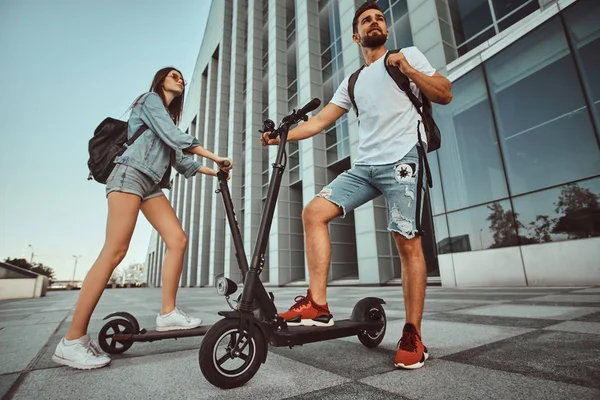
This guide is designed to provide you with straightforward and essential insights, enabling you to make an informed choice that aligns with your specific needs.
Our guide will walk you through the different types of scooters, highlighting key features to consider for each category. We understand that budget plays a crucial role in your decision, so we'll show you how to find the best match for your financial constraints without compromising on quality or suitability.
By focusing on the essentials and cutting out the fluff, we aim to make your scooter selection experience as smooth and hassle-free as possible.
Types of Scooters: Choosing the Right One for You
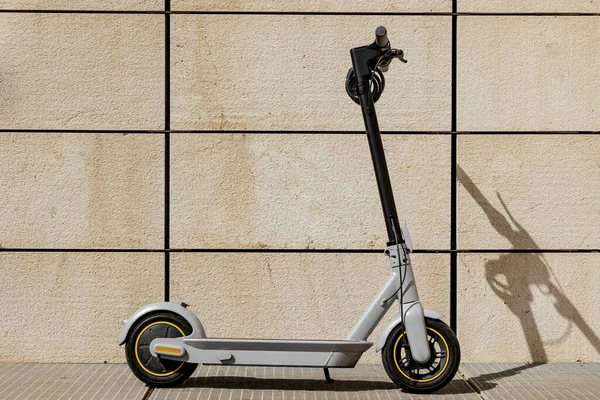
Have you ever been to a scooter store or browsed online and felt overwhelmed by the sheer variety? From performance electric scooters with powerful dual motors to simple kick scooters with smaller wheels, the options seem endless. Don’t worry, we aim to simplify the world of scooters, including dual motor scooters, and assist you in finding the perfect ride.
The key is to understand that different scooters serve different purposes, and the right one for you depends on your specific needs and preferences. We’ll examine the four primary types of scooters you might come across during your shopping journey.
Electric Scooters
If you’ve been keeping an eye on the streets lately, you’ve probably seen a rise in electric scooters. They are quickly becoming the go-to choice for many commuters and recreational riders, and it’s easy to see why.
An electric scooter offers a blend of convenience, eco-friendliness, and a dash of fun that makes them hard to resist. Most electric scooters are designed for daily commuting, offering features like larger motors and bigger batteries to handle longer distances and rough terrain.
With the average speed, reasonable range, and maximum speed offered by most models, they are a practical choice for both light recreational use and regular commuting.
However, before joining the e-scooter trend, various factors need to be taken into account. Here are some things to consider:
-
Regular travel distance: Choose a model with a range that covers your daily commute and a little extra for unexpected detours.
-
Terrain: Can the electric scooters handle uphill routes? How is their hill climbing ability? Is it easy to maneuver?
-
Weight capacity: Consider your weight and choose electric scooters with a maximum load slightly higher than your body weight for a ride and to ensure that the scooter weight capacity is not exceeded, which can prolong the scooter's life.
-
Cost: Find a balance between what you want and what you can afford. Good electric scooters can range anywhere from $400 to $3,000 or more.
Gas-Powered Scooters
If power and speed are what you’re after, then gas-powered scooters might be just your thing. Traditional, yet still very much in style, gas-powered scooters offer a sense of raw power that’s hard to match. They usually come with a comfortable seat, a start button, and even a radio for those who like to enjoy some tunes on the go.
Features like adjustable handlebars ensure a comfortable grip, which is crucial for maintaining control at higher speeds. And depending on the engine size, these scooters can offer a variety of power and speed options.
However, it’s not all smooth riding with gas-powered scooters. They require more maintenance than their electric counterparts, and being less environmentally friendly might put off some potential riders. For instance, if the engine doesn’t respond quickly and drop back down to idle speed, it might mean that the carburetor needs attention, or there might be a problem with the throttle cable or tube.
Buying a used gas-powered scooter might seem like a bargain, but be prepared for potential maintenance problems. You might end up needing to clean the carburetor, replace the ignition coil, or even replace the crankshaft. Therefore, if you choose a gas-powered scooter, be prepared for the associated maintenance tasks.
Kick Scooters
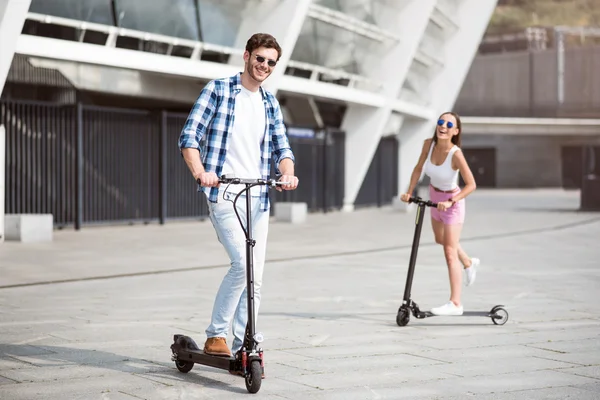
For the casual rider or the parent looking for a fun and affordable option for their child, a kick scooter might be the perfect choice. Kick scooters are all about simplicity. They are easy to use, lightweight, and most come with a foldable design for easy storage and transport. This makes them an excellent choice for short to mid-range travel, and they are especially popular among kids and beginners.
However, kick scooters have their limitations. They are slower than electric scooters and have a limited range, which makes them less practical for long distances or for performing tricks. So, if you’re planning to use your scooter primarily for commuting or if you’re an adrenaline junkie looking to perform some daring stunts, a kick scooter might not be the best fit for you. However, if your aim is to find a fun and simple mode of transportation, a kick scooter might be ideal for you.
Pro Scooters (Freestyle Scooters)
For those who view scootering as more than just a means of transportation, pro scooters are the way to go. These scooters are built with durability and extreme performance in mind, and they are designed specifically for stunts and tricks. If you’re an advanced rider looking to show off your skills at the skate park, a pro scooter can provide the specialized features and durability you need.
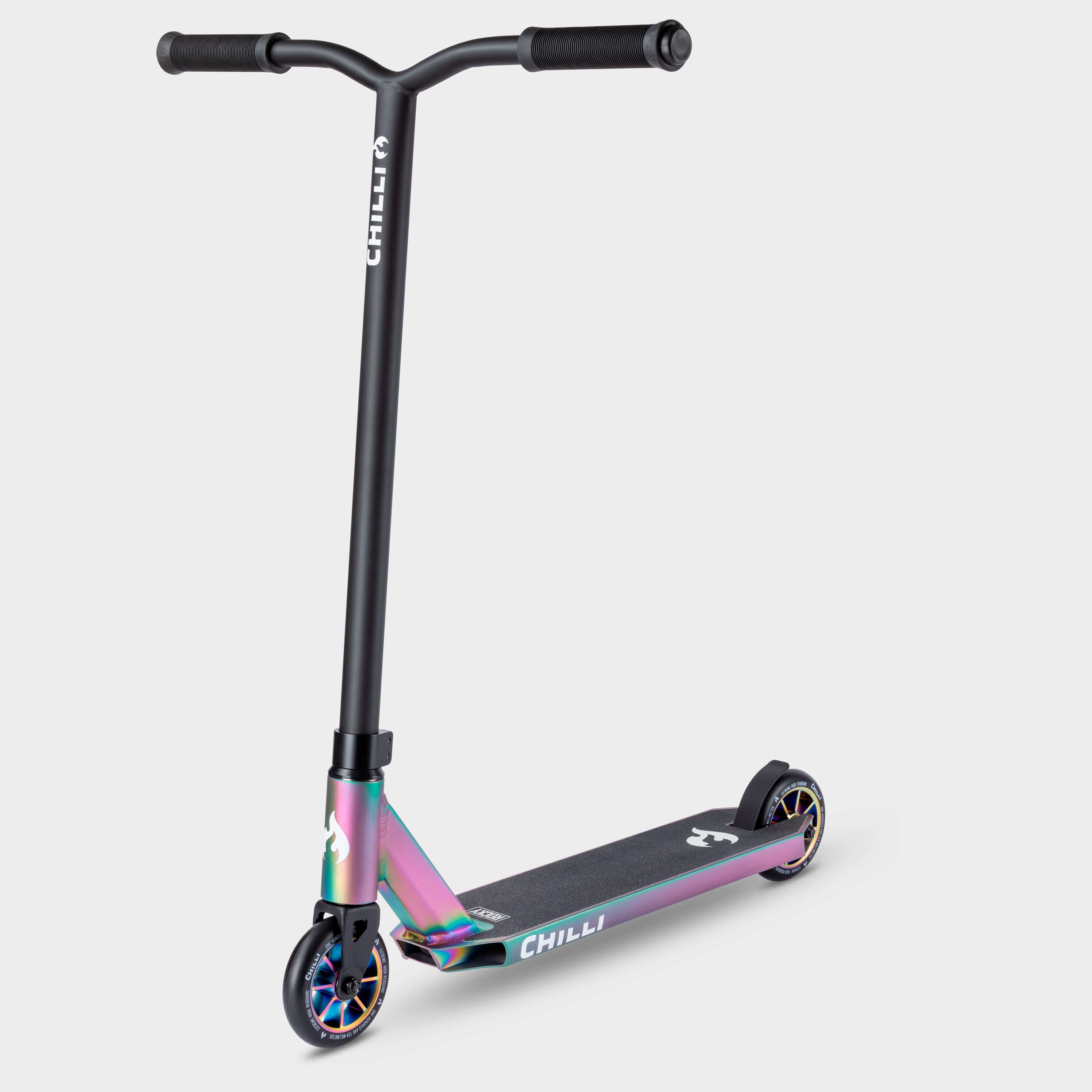
One notable feature of pro scooters is their wheel size. Unlike kick or electric scooters that might have larger wheels for a smoother ride, pro scooters typically have smaller wheels, ranging from 98 to 110 mm. This is because smaller wheels are better for performing tricks and stunts.
They offer greater control and stability, which is crucial when landing tricks. But remember, with great power comes great responsibility. Pro scooters require careful handling, and their durability is crucial, given the rough landings and high strain associated with stunts.
High-quality materials and regular maintenance are key to ensuring your pro scooter can take a beating and keep on rolling.
Design and Features to Consider
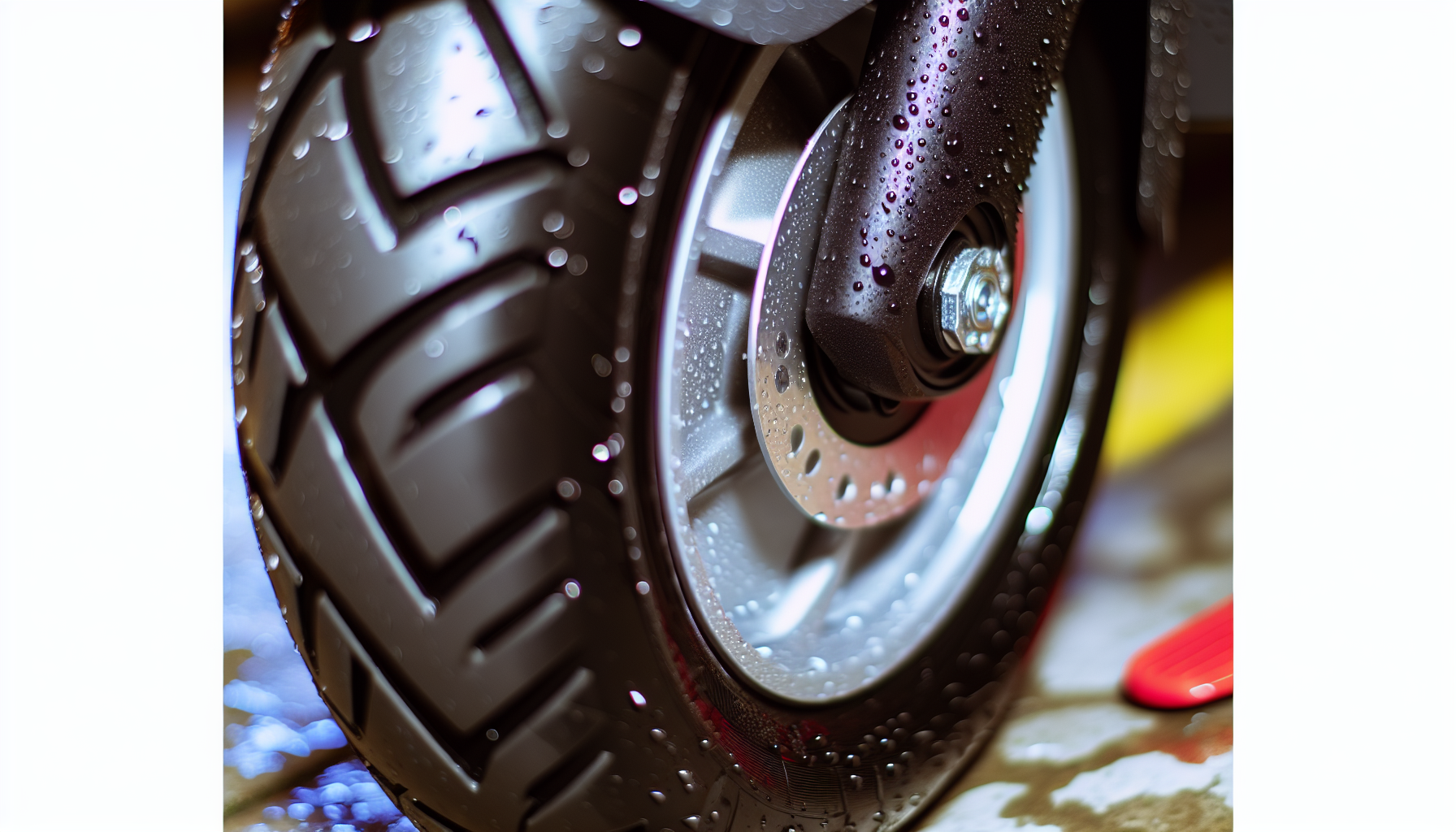
Having explored the different types of scooters, let’s now delve into the details. The design and features of a scooter play a huge role in determining its performance and how well it suits your needs. From the weight capacity and folding mechanism to wheel size and braking system, each element contributes to the scooter’s overall performance and your riding experience.
We’ll examine each of these features more closely to understand their significance.
Weight Capacity
Weight capacity is one of the first things you should look at when choosing a scooter. It’s not just about whether the scooter can carry your weight - it’s also about safety and performance.
Most scooters can carry anywhere from 220 lb (100 kg) to 265 lb (120 kg), but it’s always a good idea to choose a scooter with a max rider weight limit that’s 20-30 lbs more than your weight.
This ensures a smoother ride and prolongs the life of the scooter, while also taking into consideration the scooter weight.
But what happens if you exceed the weight capacity? Well, going over the weight limit can have several negative effects on your scooter, including:
-
Slowing down the scooter
-
Reducing its top speed
-
Affecting its overall performance
-
Potentially causing damage
This is especially true for gas-powered scooters, which depend on the engine’s motor power to carry the load, as opposed to those relying on battery power.
So, if you’re on the heavier side or if you’re planning to carry heavy loads on your scooter, consider going for a model with a higher weight capacity and superior hill climb ability.
Folding Mechanism
Another feature worth considering is the folding mechanism. This feature is all about convenience - a scooter with a folding mechanism is easy to carry around, store, and keep safe. Especially if you’re going to use the scooter for commuting and need to carry it onto public transport, a foldable design can make all the difference.
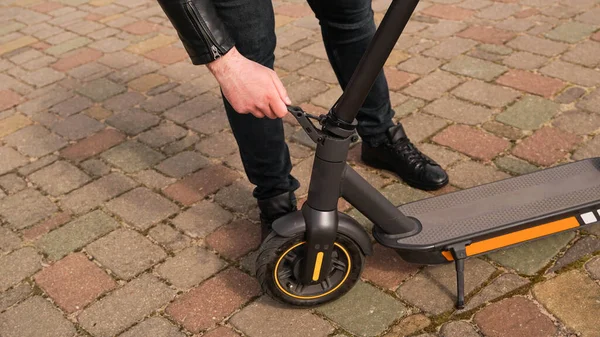
So, how does the folding mechanism work? Basically, it allows you to fold and unfold the stem of the scooter, making it more compact. Most scooters have external locking parts like levers or screws to keep the stem in place when it’s folded up. However, not all scooters come with a folding mechanism - it really depends on the design and model of the scooter.
Wheel Size
You might think that all scooter wheels are the same, but the size of the wheels can significantly affect your riding experience. Bigger wheels provide more grip and stability, making them a safer choice, especially for beginners or for those who plan to ride at their maximum speed. They also handle rough terrain better, offering a smoother ride.
On the other hand, smaller wheels are lighter and more agile, making them a good choice for tricks and stunts. However, they offer less stability and are less able to handle rough terrain. So, when choosing a scooter, consider what you’ll be using it for.
If you’re planning to use it mostly for commuting on paved roads, a scooter with larger wheels could be a better choice. But if you’re looking to perform tricks at the skate park, go for smaller wheels.
Braking System
Last but certainly not least, consider the braking system of the scooter. This feature is crucial for safety and control, and different scooters come with different types of brakes. You’ll find scooters with mechanical brakes like disc brakes, drum brakes, and foot brakes, as well as electronic brakes called e-brakes.
Each type of brake, whether drum or disc brakes, has its advantages and disadvantages. For instance, disc brakes provide excellent braking power and performance in various conditions, but they require regular maintenance.
Drum brakes, on the other hand, offer consistent performance and require less maintenance, but they don’t perform as well in wet conditions. So, when choosing a scooter, consider the environment you’ll be riding in and the level of maintenance you’re willing to put in.
Budget and Price Range
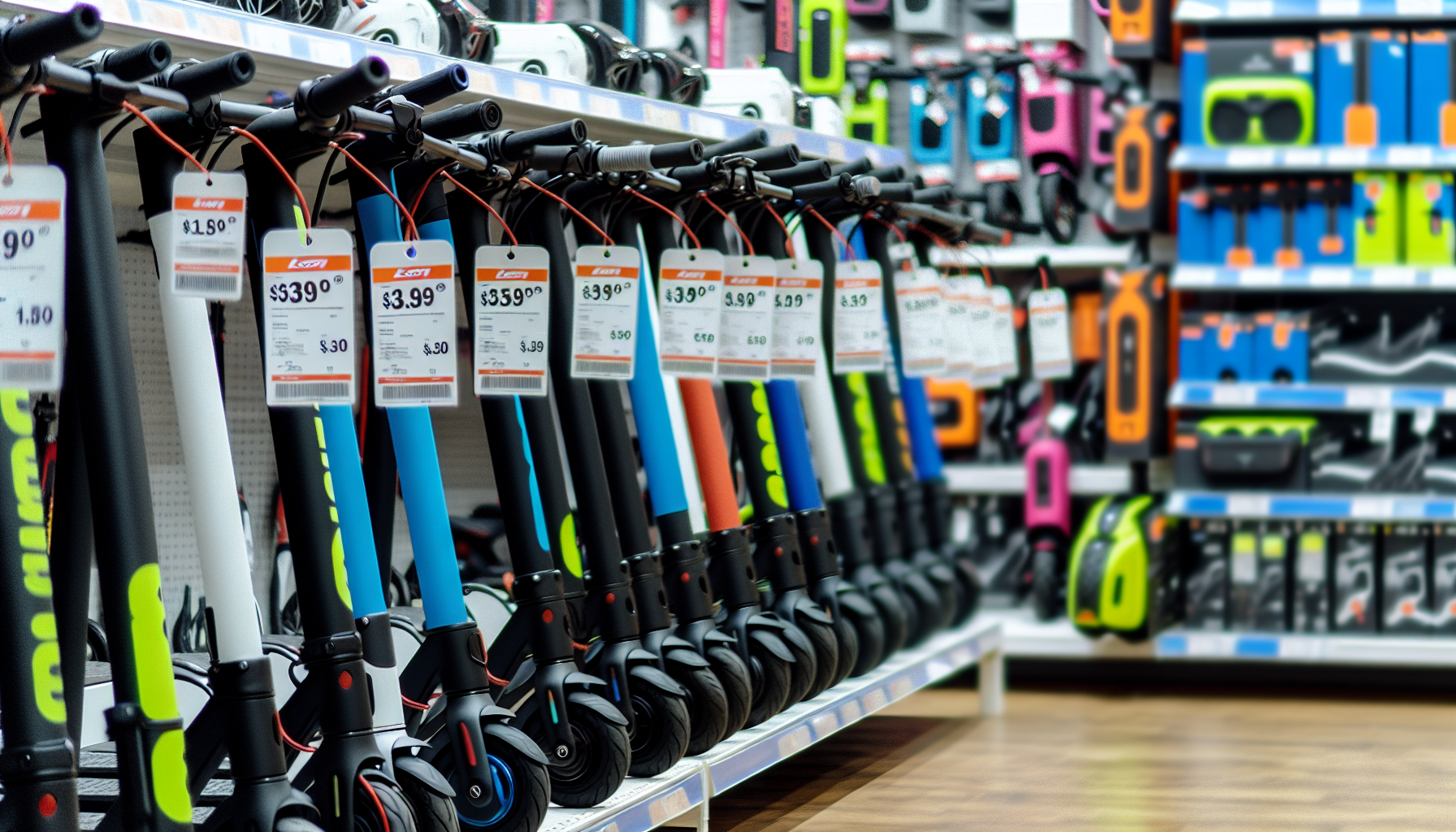
By now, you should have a good understanding of the different types of scooters and the key features to consider. But there’s one more crucial factor to consider before you make your purchase - your budget. Scooters come in a wide range of prices, including:
-
Affordable entry-level models
-
Mid-range scooters with a balance of features and price
-
High-end scooters with advanced features and superior build quality
Consider your budget and choose from a variety of budget e scooters that fit within your price range.
Now, let’s examine the different price ranges and what each one can offer you.
Entry-Level Scooters
If you’re new to scootering or just looking for a budget-friendly option, entry-level scooters could be a good fit for you. These scooters are typically priced between $100 and $1500, and they offer basic features and decent performance for casual riders.
However, as with most things in life, you get what you pay for. Entry-level scooters often lack the advanced features and superior build quality of their pricier counterparts. They might not be as durable or perform as well, especially if you plan to ride your scooter regularly or over long distances.
But if you’re just starting out or if you’re buying a scooter for occasional use, an entry-level model can be a great way to get started without breaking the bank.
Mid-Range Scooters
If you’re looking for a balance between quality, features, and price, mid-range scooters might be your best bet. Typically priced around $1500, these scooters offer better performance, longer battery life, and increased durability compared to entry-level models. With a mid-range scooter, you can expect features like good safety measures, decent range, collapsible handlebars, and a combination of drum, disc, or electric brakes.
Mid-range scooters are a great choice for those who plan to use their scooter regularly or for longer commutes. They offer a good mix of quality and performance without a hefty price tag. And with a wider range of models and brands available in this price range, you’re sure to find a scooter that fits your needs and budget.
High-End Scooters
For the serious scooter enthusiast, nothing but the best will do. High-end scooters are the cream of the crop, offering:
-
Advanced features
-
High-quality materials
-
Superior performance
-
Top-notch components
-
Longer ranges
-
Faster speeds
-
Sturdy build
-
Suspension systems
-
Full lighting
-
Puncture-proof tires
And as you might expect, all these features come with a higher price tag, ranging from $800 to $2,000.
But if you’re willing to invest in a high-end scooter, you’re getting more than just a mode of transportation - you’re getting a high-performance machine that delivers an unparalleled riding experience.
With high performance scooters, you can expect exceptional performance, reliability, and durability that can make every ride a joy.
Safety and Maintenance Tips
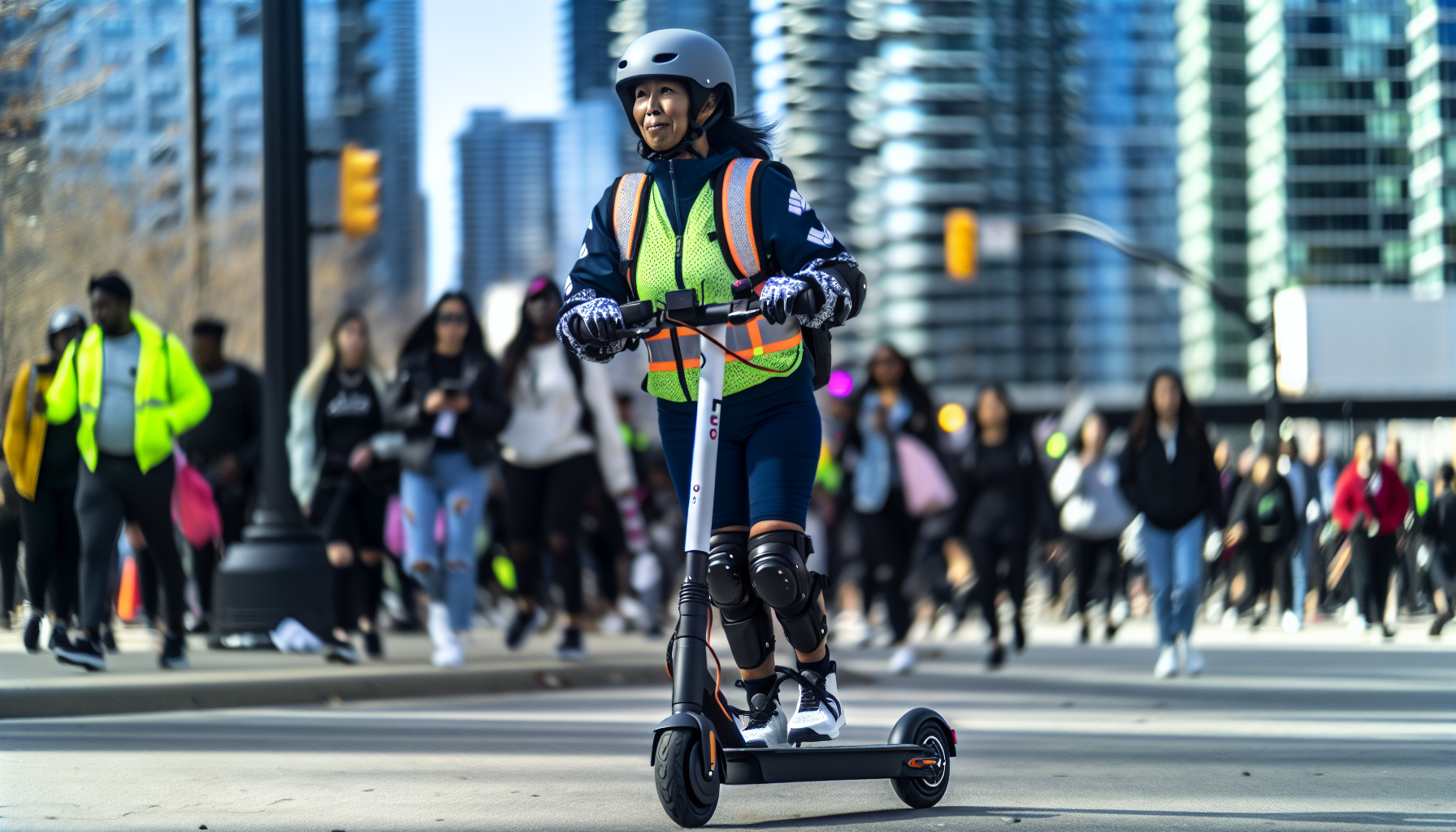
Scooters are not just about fun and convenience; safety and maintenance are equally important. Proper safety gear and regular maintenance not only ensure a safe riding experience but also prolong the life of your scooter.
We’ll now share some safety and maintenance tips to keep your scooter in prime condition and ensure your rides are safe and smooth.
Safety Gear
When it comes to scootering, safety should always be your first priority. No matter how experienced you are, always wear a helmet and other protective gear while riding a scooter. This can significantly reduce the risk of injury in case of an accident.
Choosing the right safety gear is crucial for a safe and enjoyable scootering experience. Here are some essential items to consider:
-
Helmet: It should fit snugly and securely without being too tight. Full-face helmets, downhill or BMX helmets, and open-face helmets are all good options for scooter riding.
-
Body armor: Provides additional protection for your chest, back, and shoulders.
-
High-visibility clothing: Helps make you more visible to other road users, especially in low-light conditions.
-
Wrist guards: Protect your wrists from injuries in case of a fall.
-
Knee/elbow guards: Provide extra protection for your knees and elbows.
-
Gloves: Improve your grip on the handlebars and protect your hands in case of a fall.
By wearing the right safety gear, you can ensure a safe and enjoyable scootering experience with optimal ride quality, even when using a bike lane.
Regular Maintenance
Regular maintenance is key to prolonging the life of your scooter and ensuring a smooth ride. Maintenance tasks can vary depending on the type of scooter, but generally include:
-
Tightening bolts
-
Cleaning bearings
-
Checking tire pressure
-
Ensuring that all parts are in good working order.
Some maintenance tasks require specific tools, such as:
-
Screwdrivers
-
Wrenches
-
Pliers
-
An air pump
Regular checks and maintenance not only keep your scooter running smoothly but can also prevent accidents caused by faulty or worn-out parts. Remember, a well-maintained scooter is a safe and reliable scooter.
Where to Buy a Scooter: Tips for a Smooth Purchase
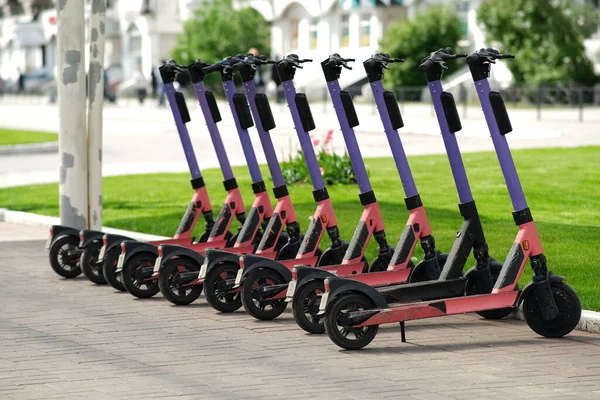
Now that you’re equipped with all the knowledge you need to choose the perfect scooter, it’s time to make your purchase. But where should you buy your scooter? From online retailers to local stores, each option has its advantages and disadvantages.
Now, let’s share some tips on how to make your scooter purchase smooth and successful.
Online Retailers
Online shopping has gained immense popularity in recent years, and for good reason. It offers convenience, a wide selection, and often better prices than brick-and-mortar stores. When it comes to buying scooters, online retailers offer a plethora of options from different brands, all available at your fingertips.
But buying a scooter online isn’t without its challenges. It’s important to:
-
Read reviews and do your research before making a purchase
-
Pay attention to the warranty and return policy
-
Look for online retailers that offer excellent customer support and hassle-free returns
By following these steps, you can make the buying process smooth and worry-free.
Local Stores
Local stores offer the advantage of being able to:
-
Physically see and test the scooter before buying
-
Get a feel for the scooter
-
Test the brakes
-
Check the comfort of the seat
-
Take it for a test ride
Local stores also often have knowledgeable staff who can provide expert advice and help you choose the right scooter based on your needs and preferences.
However, local stores may have a limited selection compared to online retailers, and prices may be higher. Also, buying from a local store means you’ll need to transport the scooter home yourself, which could be a challenge if you don’t have a suitable vehicle. But if you value the ability to try before you buy and appreciate in-person customer service, a local store could be the right choice for you.
Conclusion
Choosing the right scooter can seem like a daunting task, but it doesn’t have to be. By understanding the different types of scooters, considering the key features, and being clear about your budget, you can find the perfect scooter that fits your needs and lifestyle.
Whether you’re looking for a simple kick scooter for casual rides around the neighborhood, a high-performance electric scooter for your daily commute, or a durable pro scooter for stunts and tricks, there’s a scooter out there for you. Remember to always prioritize safety, keep up with regular maintenance, and most importantly, enjoy the ride!
Frequently Asked Questions
How to buy scooty?
When buying a scooty, set your budget, do thorough research, determine the best model for your needs, and don't forget to negotiate the price. Happy scooty shopping!
How important is the weight capacity of a scooter?
The weight capacity of a scooter is crucial for safety and performance, as choosing a capacity that's slightly higher than your weight ensures a smoother ride and prolongs the scooter's life.
What is the advantage of a folding mechanism in a scooter?
The advantage of a folding mechanism in a scooter is that it makes it easy to carry, store, and keep safe, which is especially helpful for commuting and using public transport.
What is the difference between an entry-level scooter and a high-end scooter?
The main difference between an entry-level scooter and a high-end scooter is that the entry-level models are more affordable and offer basic features, while high-end scooters provide advanced features and superior performance at a higher cost. So, it really comes down to your budget and the level of features and performance you're seeking.
What safety gear should I wear when riding a scooter?
Always make sure to wear a helmet when riding a scooter to protect your head, and consider wearing additional protective gear such as body armor, high-visibility clothing, wrist guards, knee/elbow guards, and gloves. Your safety should always come first.
